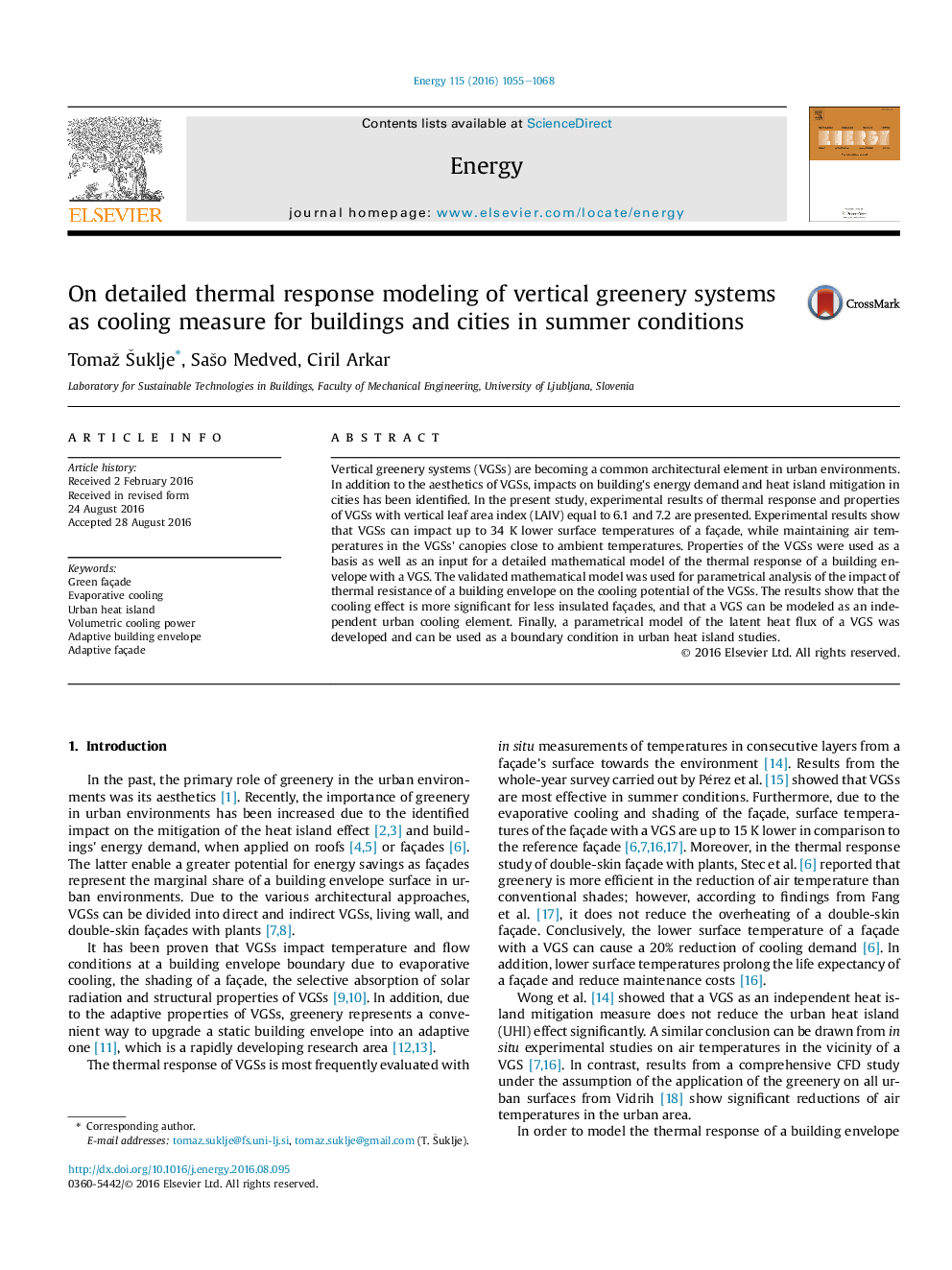| Article ID | Journal | Published Year | Pages | File Type |
|---|---|---|---|---|
| 5476741 | Energy | 2016 | 14 Pages |
Abstract
Vertical greenery systems (VGSs) are becoming a common architectural element in urban environments. In addition to the aesthetics of VGSs, impacts on building's energy demand and heat island mitigation in cities has been identified. In the present study, experimental results of thermal response and properties of VGSs with vertical leaf area index (LAIV) equal to 6.1 and 7.2 are presented. Experimental results show that VGSs can impact up to 34Â K lower surface temperatures of a façade, while maintaining air temperatures in the VGSs' canopies close to ambient temperatures. Properties of the VGSs were used as a basis as well as an input for a detailed mathematical model of the thermal response of a building envelope with a VGS. The validated mathematical model was used for parametrical analysis of the impact of thermal resistance of a building envelope on the cooling potential of the VGSs. The results show that the cooling effect is more significant for less insulated façades, and that a VGS can be modeled as an independent urban cooling element. Finally, a parametrical model of the latent heat flux of a VGS was developed and can be used as a boundary condition in urban heat island studies.
Related Topics
Physical Sciences and Engineering
Energy
Energy (General)
Authors
Tomaž Šuklje, Sašo Medved, Ciril Arkar,
